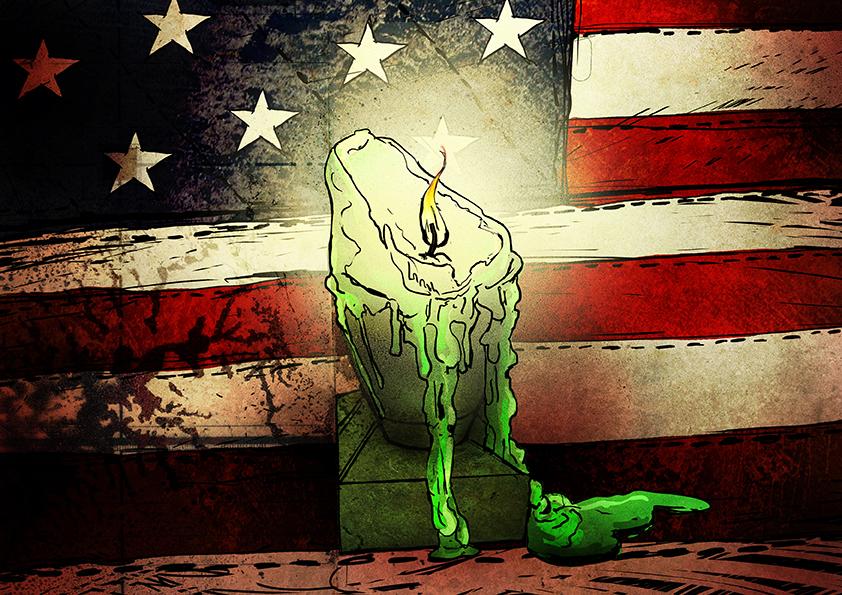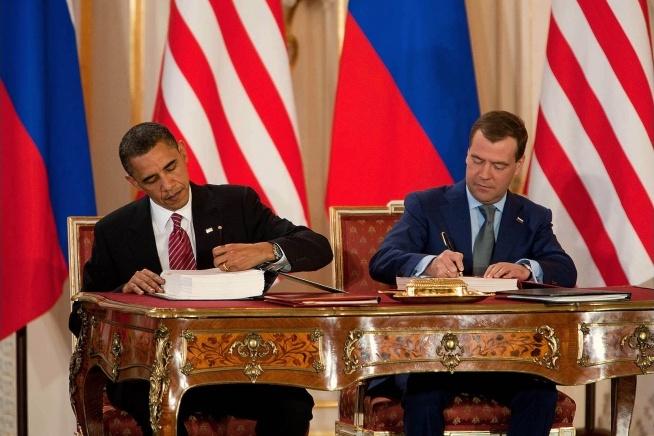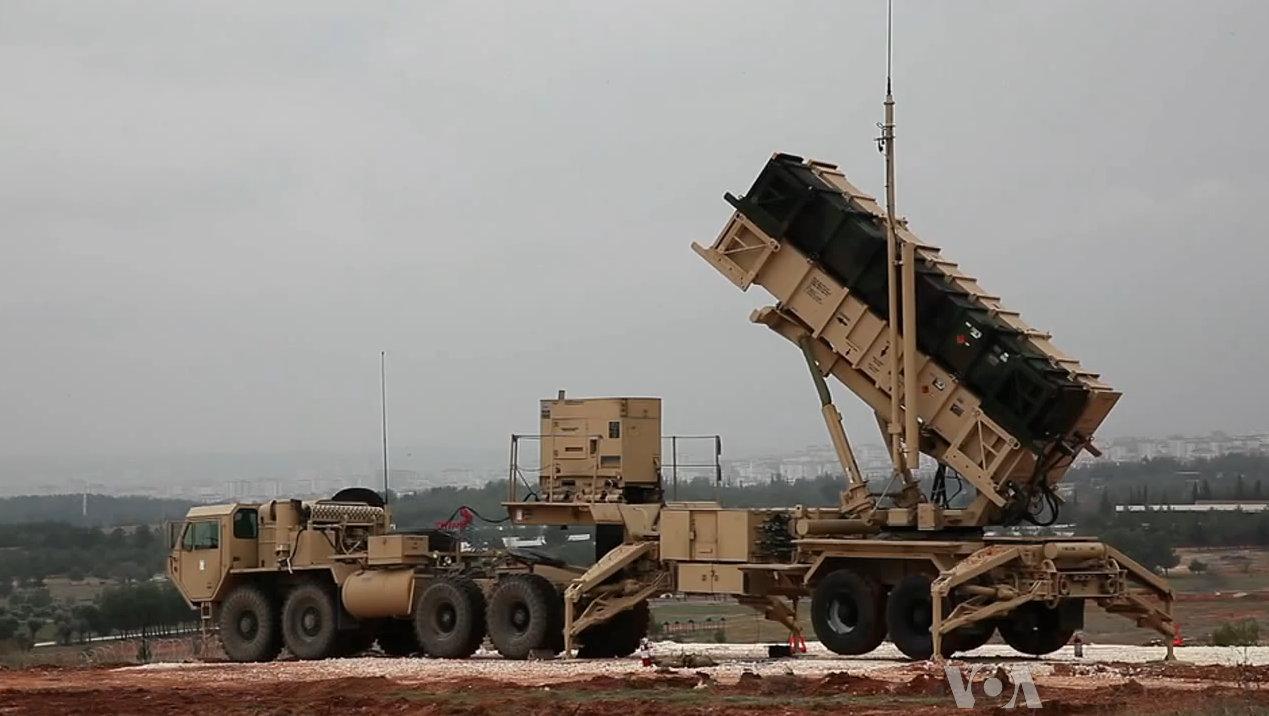The Ultimate DREAM

Standing before a crowd
in Hradčany Square, Prague, in April 2009, President Barack Obama announced his vision of the United State's role in the future of nuclear weapons.
"As the only nuclear power to have used a nuclear weapon, the United States has a moral responsibility to act. We cannot succeed in this endeavor alone. But we can lead it. We can start it. So today, I state clearly and with conviction, America's commitment to seek the peace and security of a world without nuclear weapons."
Having stated his goal of “a world without nuclear weapons,” Mr. Obama joined the ranks of U.S. presidents, dating back to Ronald Reagan, who have come out in support of global zero—the worldwide elimination of nuclear weapons. Further following in the footsteps of his predecessors, President Obama has set out to achieve this goal through the initiation of negotiation with Russia regarding the reduction of nuclear stockpiles.
Among the criticisms of the treaty is that it requires the U.S. to take significant action while barely requiring anything of Russia at all.
The largest step in the last decade toward arms reduction occurred with the ratification by both the United States and Russian of New START (Strategic Arms Reduction Treaty) which went into effect on February 5, 2011. The treaty—which was the product of talks, beginning in 2009, between Mr. Obama and Dmitry Medvedev, who was President of Russia at the time—replaced the SORT agreement (the Strategic Offensive Reduction Treaty) which had been due to expire in 2012.
Over the course of the Senate deliberations regarding the ratification of New START, significant weight was put on the treaty’s provisions to replace the verification and inspections agreements included in the START I treaty, which expired in December 2009. START I, signed by the U.S. and the U.S.S.R. in 1991 was a milestone agreement by both nations to significantly reduce the number of deployed nuclear weapons. By 2001, the number of strategic nuclear weapons was said to have been cut by around 80 percent as a result of the treaty. The agreement mandated the destruction of numerous excess delivery vehicles, which was then confirmed through a verifications regime that included on-site inspections, telemetric exchange of information, and the use of satellite imaging.

New START goes even further than both SORT and START I. Besides restoring the means of monitoring and verifying the location and scale of each country’s nuclear forces, the treaty sets significantly lower limits on weapons. According to the treaty, each side may deploy up to 1,550 strategic nuclear warheads and have 800 strategic delivery systems (with a maximum of 700 deployed at any time), such as ICBMs (intercontinental ballistic missiles) and submarines. The limit on warheads is 30% lower than the SORT’s upper limits and the cap on delivery vehicles is half of that allowed by START I.
Among the criticisms of the treaty is that it requires the U.S. to take significant action while barely requiring anything of Russia at all. This criticism is due to the fact that at the time of the signing of the treaty Russia was already well below the limit on deployed strategic delivery vehicles and only barely above the limits on warheads. The reduction is a result of Russia’s efforts to modernize its nuclear arsenal—quickly retiring older weapons systems, while replacing them with newer ones, such as new heavy liquid-fueled ICBMs, at a much slower rate.
In a hearing before the Senate Committee on Armed Services in 2010, former commander of the U.S. Strategic Command Gen. Kevin Chilton addressed this concern by stating that, although Russia is currently below the limits, “when you look to the future, we certainly don't want them to grow. They would have been unrestricted, otherwise, without these types of limits articulated in the treaty.” By placing a constraint on Russia, the treaty can be seen as a significant step in the direction toward further discussions and more significant restrictions—but most importantly it reduces the possibility of worsening the situation by expanding stockpiles.
While the treaty has been generally regarded as a step toward repairing relations between Washington and Moscow that were badly hurt after Russia’s war with Georgia in 2008, the future of U.S.-Russian cooperation appears far from assured. Unlike Medvedev, with whom Obama was able to carry forward significant discussion, current President of Russia Vladimir Putin has been less open to collaboration. Putin has stifled the progress of reduction talks in order to protest NATO’s ballistic missile defense system in Europe, which Russia fears will undermine its ability to use its missiles as deterrents—and give the U.S. a strategic advantage.

Despite these barriers, a recent article from the Associated Press indicates that the Obama administration is moving in the direction toward further cutting the U.S. nuclear arsenal—possibly to as low as 1,000 warheads. This number would put the U.S. within the limits recommended by former vice-chairman of the Joint Chiefs of Staff and former commander of Strategic Command Gen. James Cartwright in a report published in May 2012.
Writing as chairman of Global Zero, an organization--endorsed by President Obama--that is committed to eliminating all nuclear weapons, Cartwright set out specific stockpile reduction goals for the U.S. and Russia. According to Cartwright, the reductions, along with other measures such as increasing the warning times for the possible launch of weapons, would serve the central purpose of pressuring China, India, and Pakistan to cut back on their own nuclear arsenals.
Cartwright reasons that significant cuts to the U.S. arsenal are necessary for the smaller nuclear powers to view an American call for the reduction of world arsenals as legitimate—especially given how unlikely a large nuclear war with either Russia or China, which would necessitate such a large stock of weapons, is. Being able to convince these other nations to reduce their stockpiles is a central goal—especially since their arsenals are generally not under the same high levels of security as America’s nuclear weapons, making them much more likely a source for terrorists looking to procure such a weapon.
As of now, achieving global zero appears to only be a distant goal, with no nations committed to a definite timetable. In the meantime, however, it appears likely that further steps will be taken by the United States and other countries to minimize the threat of nuclear weapons to the world.
Further Reading:
- The text of New START specifies the requirements of the treaty, including the limits on weapons and the methods of verification.
- The transcript of the hearing before the Senate Committee on Armed Services features a number of the major criticism to New START raised by senators as well as the responses to those criticisms.
- In his 2009 speech in Prague, Czeck Republic, President Obama stated his long term vision for nuclear disarmament.
- The Global Zero report on “Modernizing U.S. Nuclear Strategy, Force Structure, and Posture,” includes the movement's specific recommendations regarding the U.S. nuclear arsenal.
Bibliography:
Baker, Peter. "Democrats Scramble to Save Votes to Ratify Nuclear Pact." The New York Times. The New York Times, 20 Dec. 2010. Web. 29 July 2012.
Erlanger, Mark Landler And Steven. "U.S. and Russia Activate an Arms Control Treaty." The New York Times. The New York Times, 06 Feb. 2011. Web. 29 July 2012.
Malyugin, Andrey. "Outlook for Nuclear Disarmament: A View from Moscow." Security Index: A Russian Journal on International Security 18.2 (2012): n. pag. Print.
"New START." U.S. Department of State. U.S. Department of State, 5 Feb. 2011. Web. 29 July 2012.
Sokolski, Henry D., ed. Carlisle, PA: Strategic Studies Institute, 2012. Print.
